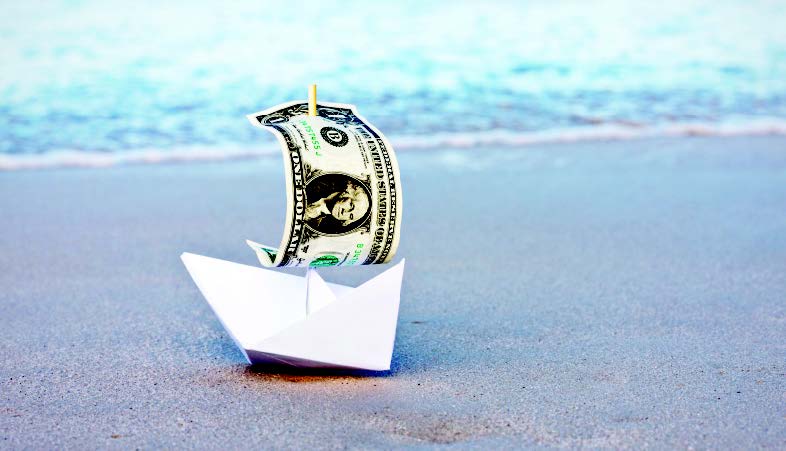As I cover the alternative investment universe, it seems that in order to enter the hedge fund elite these days one must have one’s own reinsurance company. John Paulson, David Einhorn, Louis Bacon, Steve Cohen, etc… they all have one. This trend started in the late ’90s but has accelerated in recent years and is causing virtually every successful fund manager to ask themselves, “should I set up an offshore reinsurance company?”
So what’s the real story with this phenomenon? Have the hedgie wunderkinds figured out some outrageously generous alpha created from selling reinsurance contracts? Or are there some other motivations at play? Rightly or wrongly —the answer is tax, at least in part.
Smart money (read, “hedge funds”), is doing exactly what Warren Buffett did with Berkshire Hathaway but in a much more obvious manner. One of Berkshire’s first acquisitions after Buffett took control of it was National Indemnity Company in 1967, followed by General Re and GEICO. Insurance companies in the U.S. have a special tax regime permitting deductions for insurance reserves. However, offshore insurance companies get an even bigger tax benefit, virtually unlimited tax deferral and the ability to exit at long-term capital gains rates. Buffett was an early adopter of using this tax technology to effectively run an investment company. After all, an insurance company is at some level just an investment company (or hedge fund) that also writes insurance in some limited amount.
If you indulge me a bit of boring tax background I’ll explain why/how this works.
The U.S. taxes its citizens and residents on their worldwide income. So, normally, stashing your excess cash in a company in the Cayman Islands will do nothing to lower your U.S. tax bill (in fact, if not reported correctly, it can cause you severe penalties). If the Cayman company is owned or controlled predominantly by U.S. people then the company will likely constitute a “controlled foreign corporation” or “CFC”. In fact, for insurance companies the CFC threshold is lowered to 25% of vote or value held by U.S. shareholders (a defined term for this purpose). U.S. shareholders of a CFC are taxed currently on the amount of any Subpart F income earned by the CFC. Subpart F income includes, among other things, dividends, interest, annuities, certain rents and royalties and gains from the sale of assets that produce such types of passive income.

Thus, the first step to achieving tax deferral is to avoid CFC status. This goal is typically achieved by having the voting control of the offshore company held by non-U.S. people. Note: the voting control must truly be owned by unrelated non-U.S. people, not simply another offshore company that is ultimately owned by U.S. citizens. Facially, this presents a gating issue in that you must surrender control of your new reinsurance empire to an unrelated person. Fear not, as you’ll quickly come to understand, control of the fund is what you care about and not so much the actual reinsurance company. So, with that, CFC status is avoided.
However, even if an offshore company is not a CFC, the shareholder will still be subject to current taxation on its share of Subpart F income if the company is considered a “passive foreign investment company” or “PFIC”. A PFIC is a foreign corporation with either:
- Income, 75% or more of which is passive income (i.e., investment income);or
- Assets, 50% or more of which produce passive income (both tests performed on an annual basis)
Thus, most reinsurance companies would constitute a PFIC but for an important exemption. The term “passive income” does not include any income derived in the active conduct of an insurance business by a corporation which is predominantly engaged in an insurance business. And this is why the hedgie elite form reinsurance companies.
The trick, if there is one, is that in order to avoid PFIC status the offshore company must truly be “predominantly engaged in an insurance business.” This means writing real insurance and taking real risk. All the existing hedge fund owned reinsurers do this in varying degrees. The key is coming up with a comfortable insurance to investment ratio and then picking the appropriate insurance risks. Low volatility and limited exposure are normally the desired attributes for the insurance risk.
Prior to entering the reinsurance business your U.S. investor base (all verified QPs), were limited partners in the fund or U.S. feeder. The U.S. investors were subject to current taxation on all the income and gains of the fund (and, the expenses may have been non-deductible due to AMT). Plus, the investors were able to pull their money out of the fund subject to any notice provisions or gates your fund may have. Now, U.S. investors will buy shares in the reinsurance company – permanent capital. The ultimate goal is to take the reinsurer public providing investors liquidity in the market (note, at last count there were twenty-two public offshore reinsurance companies). Once publicly registered, your fund is open to retail investor money, not just QPs and above. The investors have no tax liabilities (absent any dividend distributions) until they dispose of their shares. When they finally do exit the investment they will have long-term capital gains (assuming a minimum one year holding period). A much better result for everyone.
DOES THIS TYPE OF TAX PLANNING REALLY WORK? YES, IF DONE CORRECTLY. THE IRS IS WELL AWARE OF THE OFFSHORE REINSURANCE TAX BENEFITS. IN MAY OF 2003, THE IRS PUT OUT NOTICE 2003-34, WARNING TAXPAYERS THAT IT WOULD SCRUTINIZE THESE REINSURANCE STRATEGIES TO ENSURE THAT THEY CONSTITUTE REAL INSURANCE COMPANIES AND WRITE REAL INSURANCE.
The reinsurer then takes its equity capital plus its premium income from writing reinsurance policies and invests nearly 100% of it in your fund. Your fund is then able to collect normal management and incentive fees on this AUM. As you can see, you remain in control of the money through your fund. Control of the actual reinsurance company is not as important. The organizational documents of the reinsurer will limit the types and amounts of insurance that can be written. Most hedge funds contemplating this structure will partner with an existing reinsurance company to write the appropriate insurance.
In the end, what you are able to create with an offshore reinsurance company is a tax efficient access vehicle for your fund. You are also able to reach a wider investor base (once the reinsurer is public), maintain permanent capital and, to some extent, take on insurance risk which is an uncorrelated asset class.
Does this type of tax planning really work? Yes, if done correctly. The IRS is well aware of the offshore reinsurance tax benefits. In May of 2003, the IRS put out Notice 2003-34, warning taxpayers that it would scrutinize these reinsurance strategies to ensure that they constitute real insurance companies and write real insurance. The Notice also recognizes that, assuming a real insurance business, the tax planning works under current law. Naturally, I have glossed over many of the nuances of meeting the technical tax requirements for a successful hedge fund owned reinsurer (in order to spare you hours of reading). The structure must be put together carefully and there are many tangential tax issues to consider. Moreover, the reinsurance structure may not be right for everyone. The partners at WithumSmith+Brown have extensive experience in these matters and are happy to walk you through the planning.


